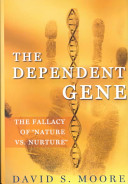Genes and their Environment
In his 1974 best-seller “The Lives of a Cell” the beloved Dr and gifted author, Lewis Thomas, describes much of what is done to treat diseases like cancer as ‘halfway technology’ and articulates convincingly that funding basic research in biological science will pay huge dividends to both wellness and long-term health-care savings.
Update Sep 2017
Genes – Nowhere in our search for references on genes and their environment have we found anything as rich as the publications by RJP Williams and JJR Frausto da Silva; The Natural Selection for the Chemical Elements is a highly recommended read. Genes do play an integral role in life as we know it, but genes themselves are essentially passive. For all types of cellular life (i.e. plant and animal kingdom) genes ‘react’ (take cues) to the environment they are placed in. The cellular expression we refer to as cancer is an extension of this thought.
Suggested reading (book reviews linked to the image)




Environment
Cancer is the result of normal cell physiology; ponder on the word ‘normal’. In consideration of this, we recognize the following:
- At the onset of life, the initial viability of the fertilized ovum (conceptus) is based on three distinct factors:
- the health of both the sperm and egg,
- the viability of the maternal cytoplasm, and
- the physical environment the ‘conceptus’ encounters.
- The developmental sequence from the physically large conceptus begins with meiotic type cell division until there are approximately 1000 cells of the size of our normal (somatic) cells. Subsequent cellular division is altered to mitosis where over the remaining period of our gestation the initiation/transformation of cell types like brain, blood, bone, liver, heart, etc. Throughout this process, these cells can’t just replicate and grow on their own; they receive cues from adjacent cells, and are nourished and shepherded by the surrounding cellular environment.
- The one thing that is relevant to our view of cancer is that in all but the rarest of circumstances, the offspring of each successive cell division of our bodies has identical genetic make-up, regardless of where they are found in our body or whether they are cancerous or non-cancerous. The differences we hear about result from different genetic expression, not a different genome. These different expressions are based not only on the imbedded transcribed genes but of equal importance, the subsequent modifications that result from the physical and biochemical environment that allow the cell to meet its required function (i.e. – whether it is a kidney, heart or liver cell).
Within the context of this preceding fundamental cell physiology overview, we see that all cells at all times respond to the makeup of their internal and external environments. From this perspective, cancer (in all of its forms) can be viewed as the result of a deteriorated cellular environment, and the over 200 manifestations of cancer, permutations of this out-of-balance state. This acquired state is what is detrimental to the normal life supporting functioning of the specific cell, whether breast, prostate, colon or other cancerous site. Yet we all need to know that as insidious as many cancers become, cancer itself is a very normal and increasingly predictable response to certain surroundings.
Cancer when viewed from this perspective assimilates many of the existing cancer hypotheses and their models, but more importantly, also opens many previously unexplored avenues to confront the disease. Cancer is much more easily and effectively targeted from this understanding.